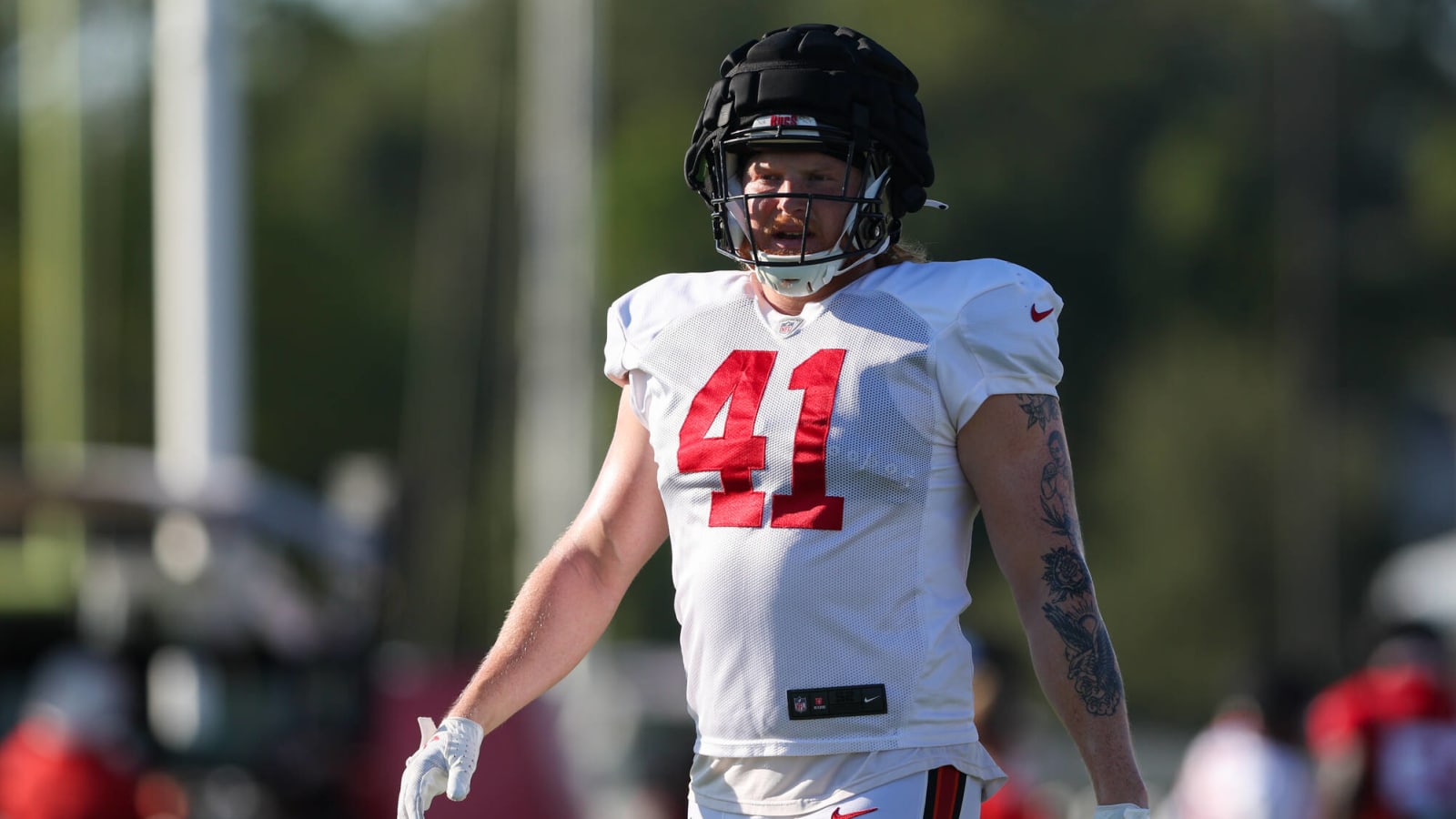
After winning 20-17 over the Vikings last week, we can semi-confidently say two things. One, as of this writing, the Bucs are averaging more points scored this year (20) than last year (18.4). And two, even with a more efficient offense by design, points and yards may not be as easy to come by as some thought.
The Bucs stalled on their first six drives last week in Minnesota. Execution had a lot to do with it. Tight end Ko Kieft dropped a would-be first down on a potential explosive down the left side of the field to prematurely end the first drive. Later in the first half he dropped a would-be touchdown.
Receiver Mike Evans could not corral a deep shot in single coverage down the right sideline that Bucs fans have come to expect from him. Running backs were missing their holes while tight ends were unable to finish blocks. Center Robert Hainsey got driven into the backfield on some run calls that finished the play before it even had a hope to deliver.
But still there were some curious choices made throughout the game that led to the Bucs averaging just 3.5 yards per play on first down and 3.2 yards per play outside of the final two minutes of each half. The team faced an average of 3rd and 5.3 yards to go in those situations on the day. That’s a tough ask of your third down offense.
Offensive coordinator Dave Canales spoke with the media on Thursday and praised his running game in terms of their efficiency.
“I think that’s where we define it differently,” Canales said. “For us, run efficiency is four yards or better. Our goal is 50% – we were 52% efficiency in the run game. So, I’m fired up about that. I don’t think we had any negative runs – we might have had maybe one. We had one negative run. The goal is zero negative runs, but it’s not uncommon in a zone scheme to have three or four. I come out of it – we’re sitting there as a staff saying 52% efficiency guys.
“That means we blocked everything right. That means we got the running back started. Now is where the volume, the experience, Rachaad [White] getting those runs, seeing where those second-level voids are, Sean [Tucker], Chase [Edmonds] – really being able to like make it happen after the first level. I was excited about it. Then, to just be able to get into a four-minute mode and run it, throw it a little bit and then run it again at the end to take over the time of possession. I thought the run game was fine.”
Canales is right in that his team defines rushing efficiency differently than the football community as a whole. Typically, an efficient run (or pass for that matter) is defined as a play that gains 1/2 the yards needed for a first down or touchdown on first down and 70% of the yardage needed on second down.
A four-yard run on second-and-12 isn’t a good outcome for an offense. Similarly, a three-yard run on second-and-5 accomplishes your goal. Defining four yards removes context, and context is key. By the more accepted definition the Bucs’ run game was much less efficient than Canales claimed. They had 21 first or second down runs outside the two-minute drills last week. They were only successful on eight of those runs while averaging just 3.0 yards per carry on those plays.
Their passing game was scant better. Of the 21 pass plays the Bucs ran in first/second down situations outside the 2-minute warnings Tampa Bay was successful the same 38.1% of the time while averaging 3.7 yards per play.
Personnel Made Little Difference In Bucs’ Efficiency
Whether Dave Canales was running 11 (one back, one tight end, three receivers) or 12 personnel (one back, two tight ends, two receivers), his offense faced the same challenges moving the ball on early downs. Playing 11 personnel yielded 3.8 yards per play and a 33.33% success rate. Playing 12 personnel was marginally better with a 45% success rate but a much lower 3.1 yards per play.
This was due to two successful runs out of 12 personnel of three yards each on a 2nd-and-four and a second-and-three. Passing out of 12 personnel was especially difficult for the Bucs offense on the day until very late. The Bucs first six passes out of 12 personnel on 1st/2nd down yielded eight yards and one successful play. They finished stronger with three completions of six yards (all considered successful). Running from 12 personnel proved to gain positive yardage more consistently.
Tampa Bay averaged 3.3 yards per play running from 12 personnel with a success rate of 45%.
From 11 personnel, which the Bucs chose to be in 43% of the time (to the 48% usage of 12 personnel) the team was successful on just 33% of their plays with an average gain of 3.8 yards. They averaged 4.4 yards per pass play from 11p with a success rate of 36%. While running from 11 personnel the Bucs were successful on two of seven plays while averaging just 3.0 yards per play.
Without reliable options beyond Chris Godwin and Mike Evans the Bucs proved on Sunday that the offense is still a work in progress. Canales will need to find a more successful formula going forward because 3.3 yards per play on first and second down is not going to cut it over a full season. The team figured that out last year.
More must-reads:
- Three reasons the Cowboys should extend Dak Prescott now
- How Patriots' Drake Maye has already impressed Jacoby Brissett
- The 'Super Bowl starting QBs' quiz
Breaking News
Customize Your Newsletter
 +
+
Get the latest news and rumors, customized to your favorite sports and teams. Emailed daily. Always free!

